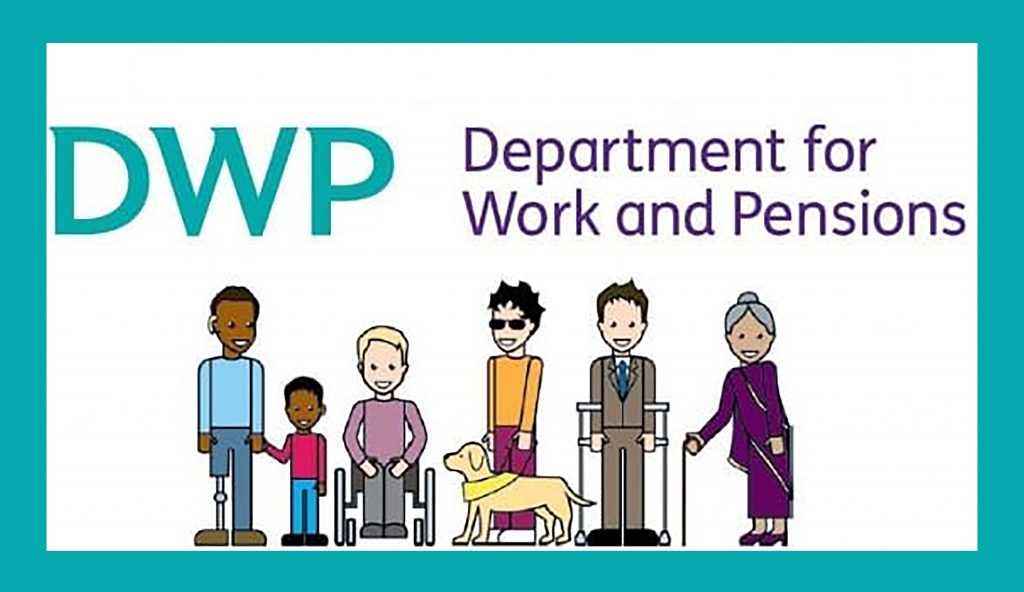
Disclaimer: The following article discusses the sensitive topics of suicide and government policies related to suicide prevention. We understand that these subjects can be emotionally charged and deeply personal. The information provided in this article is intended for educational and informational purposes only and is not a substitute for professional medical, psychological, or legal advice. It is essential to approach discussions about suicide with empathy, respect, and a commitment to promoting mental health awareness and support. If you or someone you know is in crisis or experiencing thoughts of self-harm or suicide, we urge you to seek immediate assistance from a qualified mental health professional, a crisis hotline, or a trusted support network. The views and opinions expressed in this article are those of the author and do not necessarily reflect the official stance or policies of any government, organization, or institution. Government policies and approaches to suicide prevention can vary widely and may change over time. For accurate and up-to-date information on government initiatives and resources related to suicide prevention, please consult official government websites or relevant authorities. We encourage readers to engage in thoughtful and constructive discussions on these critical topics and to seek information from a variety of reputable sources to form a well-rounded understanding of the issues at hand. Your mental health and well-being are of paramount importance, and there are resources available to provide the support and assistance you may need.
The Contradiction Concerning Over-The-Counter Painkillers and Personal Independence Payment (PIP) Assessments Rejections.
In recent years, the world has witnessed a concerning increase in suicide rates, prompting governments and healthcare systems to take proactive measures to tackle this pressing issue. While addressing the complex causes of suicide requires a multifaceted approach, one unexpected area of focus has emerged: the regulation of over-the-counter painkillers, especially paracetamol (acetaminophen). The correlation between painkiller sales and suicide rates may not be immediately apparent, but it highlights an important aspect of suicide prevention efforts.
The Paracetamol Dilemma
Paracetamol, commonly known as acetaminophen in the United States and Canada, is one of the most widely used over-the-counter painkillers worldwide. It is generally safe when taken as directed, but excessive or prolonged use can lead to severe liver damage and even death. Unfortunately, paracetamol overdose is a frequent method of self-harm among those contemplating suicide.
Understanding the Connection
To comprehend the relationship between paracetamol and suicide, one must first grasp the psychology behind self-harm and the factors that lead individuals to take this extreme step. Suicide often results from a complex interplay of emotional, social, and psychological factors. However, the immediate accessibility of lethal means can significantly influence whether an individual acts on their suicidal thoughts.
Government Intervention
Governments around the world are taking proactive steps to address the connection between painkiller availability and suicide rates. One of the most effective measures has been limiting the quantity of paracetamol that can be purchased at one time and imposing stricter regulations on its sale. These restrictions are designed to deter impulse acts of self-harm while ensuring that people who genuinely need the medication for pain management can still access it.
In addition to quantity limits, some countries have introduced blister packaging for paracetamol and similar medications. This makes it more difficult for individuals to access large quantities of the drug at once, further reducing the likelihood of impulsive self-harm.
Education and Awareness
Government initiatives are not limited to regulatory changes. Suicide prevention programs emphasize education and awareness campaigns to help individuals identify and seek help for mental health issues. These initiatives encourage people to reach out to those in crisis and to support them in finding appropriate professional help.
Moreover, healthcare providers are being trained to recognize signs of self-harm and suicidal ideation in their patients. Early intervention and mental health support can be crucial in preventing self-destructive behavior.
The Role of Healthcare Professionals
Healthcare professionals play a vital role in addressing the issue of paracetamol overdose as a method of self-harm. They should remain vigilant and inquire about the reasons behind a patient’s painkiller purchase, especially if it appears excessive or unusual. Detecting suicidal intent early can be a lifesaving intervention.
While suicide is a complex issue with no single solution, governments and healthcare systems are increasingly recognizing the connection between painkiller accessibility and suicide rates. By implementing stricter regulations on the sale of over-the-counter painkillers like paracetamol and promoting mental health awareness, we can take significant steps toward reducing impulsive self-harm incidents and saving lives. As we continue to address the multifaceted problem of suicide, a thoughtful approach to painkiller sales regulation is a crucial element in our collective efforts to prevent this tragic loss of life.
Why is the government taking action about over-the-counter painkillers but in the next breath driving people to the brink of suicide with PIP assessment rejections https://disabledentrepreneur.uk/pip-assessments-pushing-people-to-the-brink-of-suicide-the-editors-experience/
The apparent contradiction between government actions concerning over-the-counter painkillers and Personal Independence Payment (PIP) assessments is a complex issue rooted in the broader context of government policies, healthcare, and social support systems. It reflects the need for a comprehensive and holistic approach to public policy.
- Diverse Government Departments: The government consists of various departments and agencies, each responsible for different aspects of policy and administration. Decisions related to healthcare and disability benefits (such as PIP assessments) are managed by one set of agencies, while those related to drug regulation and suicide prevention may be overseen by others. These departments often have different objectives, resources, and decision-making processes.
- Varied Approaches to Healthcare and Disability: Healthcare policies and disability benefit programs are designed to address different needs and concerns. While efforts to regulate painkiller sales are aimed at reducing impulsive self-harm incidents, PIP assessments are intended to evaluate an individual’s eligibility for disability benefits. The criteria for these assessments can be stringent to ensure that benefits are allocated to those who genuinely need them, but this process can sometimes be challenging for applicants.
- Policy Priorities and Resources: Government departments allocate resources and prioritize policies based on various factors, including budget constraints, public opinion, and political agendas. It’s possible for different departments to have differing priorities and levels of funding, which can lead to variations in the approach and effectiveness of their respective programs.
- Complex Societal Issues: Issues like suicide prevention and disability support are inherently complex and multifaceted. They involve addressing the physical and mental health of individuals, navigating bureaucratic systems, and responding to societal attitudes and stigma. These complexities can result in inconsistencies in policy implementation.
- Public Advocacy and Awareness: Public advocacy and awareness play a crucial role in shaping government policies. When specific issues gain more public attention and advocacy, governments may respond with changes in policy or increased funding. In some cases, discrepancies between policies may reflect variations in public awareness and advocacy efforts.
How to prevent over-the-counter painkillers from being purchased in multiple stores
Preventing individuals from purchasing over-the-counter (OTC) painkillers in multiple stores can be challenging, as it relies on a combination of regulatory measures, technological solutions, and public awareness efforts. Here are some strategies that can be employed to address this issue:
- Limit Quantity Purchases: Government regulations can restrict the quantity of OTC painkillers that individuals can purchase in a single transaction. Implementing quantity limits helps prevent large-scale purchases for non-medical purposes.
- Real-time Tracking Systems: Develop or adopt real-time tracking systems for OTC medication sales. Pharmacies and retailers can connect to a centralized database that monitors purchases across different stores. If a customer exceeds the allowable limit, the system can flag the purchase.
- Identification and Registration: Introduce a system that requires customers to provide identification when purchasing OTC painkillers. This can help track an individual’s purchases across different stores over time.
- Pharmacist Consultation: Encourage pharmacists to engage customers in conversations about the appropriate use of OTC medications. If someone is attempting to make multiple purchases, pharmacists can intervene and assess the situation.
- Public Awareness Campaigns: Launch public awareness campaigns about the dangers of misuse and overdose of OTC painkillers. Educate the public about the risks associated with multiple purchases and the importance of responsible medication use.
- Retailer Training: Train retail staff to recognize potential misuse of OTC medications and the signs of excessive purchasing. Establish protocols for store employees to follow when they suspect misuse.
- Age Verification: Implement age verification checks for OTC medication purchases, similar to those used for age-restricted products like alcohol and tobacco. This can deter younger individuals from attempting multiple purchases.
- Collaboration with Law Enforcement: Collaborate with law enforcement agencies to monitor and investigate instances of bulk purchasing or stockpiling of OTC medications for non-medical purposes.
- Community Pharmacies: Encourage individuals to establish a relationship with a specific community pharmacy. Frequenting a single pharmacy can help pharmacists better monitor an individual’s medication history.
- Data Sharing and Reporting: Establish mechanisms for pharmacies and retailers to share data on suspicious purchasing patterns. Reporting unusual purchases to authorities can help identify potential cases of abuse.
- Legislation and Penalties: Enact legislation that imposes penalties for individuals found to be deliberately purchasing excessive quantities of OTC medications for non-medical purposes. The threat of legal consequences can act as a deterrent.
- Prescription Requirement: Consider reclassifying certain OTC painkillers as prescription-only if misuse and abuse become widespread and difficult to control through other means.
Preventing the multiple purchases of OTC painkillers is a multifaceted challenge that requires collaboration between government agencies, healthcare professionals, retailers, and the public. Combining regulatory measures, technological solutions, and educational efforts can help reduce the risks associated with the misuse of these medications.
No Smoke Without Fire
The pressing question of whether governments engage in tactics like “blowing smoke” or distracting to divert attention from real issues is often grounded in public skepticism and mistrust of political leaders. While it’s essential to approach such claims critically and evaluate them on a case-by-case basis, it is not uncommon for governments, like any other organizations or individuals, to employ communication strategies that can include diversion or redirection of public attention.
Here are a few key points to consider when assessing whether a government may be attempting to divert attention from real issues:
- Political Messaging: Governments often seek to shape public discourse and perception through strategic communication. This can involve highlighting certain issues, achievements, or policy initiatives while downplaying or avoiding others. Critics may perceive this as an attempt to distract from more pressing matters.
- Media Relations: Government agencies may interact with the media to control the narrative around specific issues. They might release information strategically to draw attention away from negative news or controversies. However, this practice is not unique to governments and is common in public relations across various sectors.
- Political Theater: Political leaders may engage in symbolic acts or events to create the appearance of addressing an issue while not necessarily addressing the root causes or substantive concerns. This can give the impression of action without meaningful change.
- Public Opinion Management: Governments may use polling and public opinion research to understand public sentiment and adapt their messaging accordingly. Sometimes, this can result in emphasizing certain issues that align with popular sentiment or downplaying divisive or challenging topics.
- Transparency and Accountability: Advocacy groups, investigative journalism, and public discourse play a crucial role in holding governments accountable for their actions and decisions. Transparency and scrutiny are essential for maintaining a healthy democracy.
It’s important for citizens to remain informed, critically evaluate information from multiple sources, and engage in open discussions about the actions and policies of their governments. While some may view government actions as attempts to distract from real issues, others may perceive them as legitimate efforts to address pressing concerns.
Ultimately, the effectiveness and ethicality of government communication strategies depend on their alignment with democratic principles, transparency, accountability, and the degree to which they address the genuine needs and concerns of the public. Public awareness, civic engagement, and a free press are essential components of holding governments accountable for their actions and ensuring that they prioritize the welfare of their citizens.
Conclusion
It’s important to recognize that government actions, policies, and decisions are often the subject of debate and scrutiny. Citizens, advocacy groups, and policymakers continually work to hold governments accountable for their actions and to advocate for policies that they believe are just and effective.
In the case of PIP assessments, concerns about the process’s fairness and impact on vulnerable individuals have led to ongoing discussions and potential reforms. These discussions can result in changes to policies and procedures aimed at improving the system.
Ultimately, addressing complex societal issues such as mental health, disability support, and suicide prevention requires a comprehensive and coordinated approach involving multiple stakeholders, including government, healthcare providers, advocacy groups, and the broader community. Achieving a balanced and effective policy landscape is an ongoing challenge that requires ongoing dialogue and advocacy for positive change.
Further Reading
Suicides in England and Wales – Office for National Statistics (ons.gov.uk)
ADVERTISEMENT

#suicideprevention #suicide #paracetamol #painkillers #pip #dwp #personalindependencepayments #nhs
Andrew Jones is a seasoned journalist renowned for his expertise in current affairs, politics, economics and health reporting. With a career spanning over two decades, he has established himself as a trusted voice in the field, providing insightful analysis and thought-provoking commentary on some of the most pressing issues of our time.









